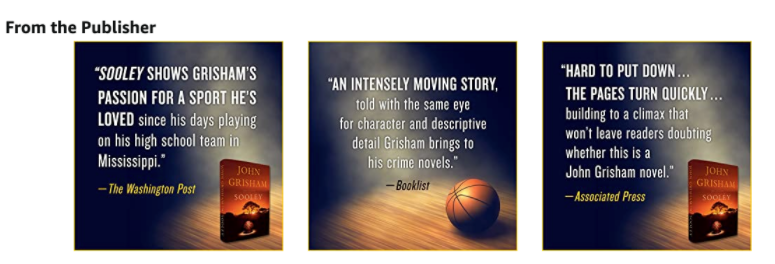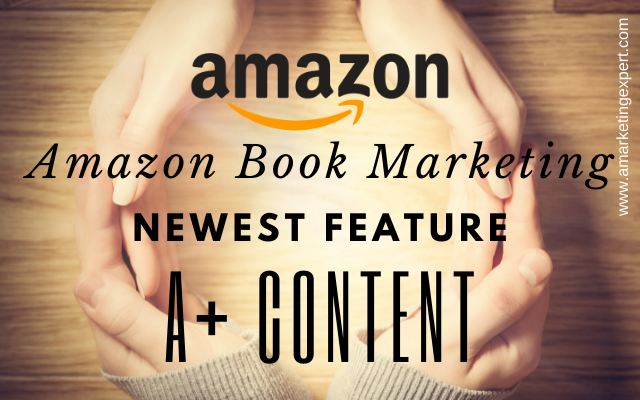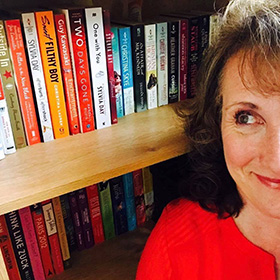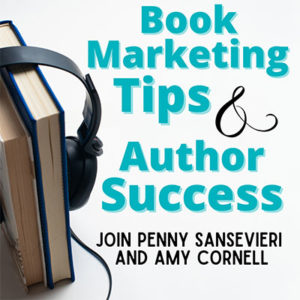It’s a really exciting time for authors who really want to push their books to the next level with Amazon book marketing because they just announced the arrival of A+ Content for KDP authors.
What is A+ Content? A Definition and Examples.
Amazon’s A+ Content are images, added to your book page, to help readers delve deeper into your book via images, stand-out reviews, book quotes, etc. Here are some examples that I found and absolutely loved:


What Are the Benefits of Amazon’s A+ Content? Let’s Dig In.
Higher conversion rates: Some industry experts have reported that A+ Content can increase book page conversion by as much as 10% – and that’s a huge jump. As we dig into this article, you’ll soon see why.
Reduced return rate: Yes, readers do return books, often because the book description wasn’t tight enough and they misunderstood what they were buying. Adding imagery with book quotes, reviews, and other snapshots of the book can help you not only garner more sales but avoid unhappy readers returning your book.
Better reviews: By the same token, when readers better understand what your book is about, they’ll also give you better reviews. For example, I’ve had readers misunderstand what my book on Amazon marketing is really about and then mention this in the reviews. Sometimes this can’t be avoided but using imagery to help bolster your Amazon book page and clarify the benefits to your reader will help you tremendously.
Add relevant details to help drive buying decisions: Sometimes it’s hard to compete with the thousands of other books in your same topic/genre. But by adding details specific to your niche and that speak to your reader, you can help increase the chances of your reader hitting the “buy” button on your book.
Increase reader engagement: Remember when we all had to go to bookstores to buy books? I sometimes miss having a conversation with booksellers about a book, what they loved, and what details about the book stood out to them. Using Amazon’s A+ Content feature can help boost your readers’ engagement by sharing more thoughtful details, book nuances, benefits, etc. to keep them engaged in your book.
Here’s How You Can use A+ Content to Boost Your Amazon Book Marketing.
Use good images: First and foremost, please don’t just slap anything up there. Spend some time crafting really good colorful images. Stick with your branding; don’t miss the mark on this because you want to keep with the theme/look of your book.
Your content is a journey: If you’re going to use multiple images, which I recommend, remember that your content is a journey through your book. Not necessarily taking readers from start to finish, per se, but immersing them in your book in such a way that your content journey makes sense. And as you can see from some of the A+ Content I highlighted earlier, a lot of A+ Content images really sync up with each other, meaning that they follow a path – or a journey as it were.
Treat this like a landing page: By this I mean it’s got to be one, cohesive message and a landing page is a good analogy. So often on a landing page, the person creating it has one goal, and usually, it’s to get someone to sign up or buy something. So using this analogy, you want to create images that work in concert with each other – with each image pushing the reader further and further into your book.
Don’t get complex with your wording: I love the acronym KISS – which means to keep it simple. Don’t get overly wordy with your images. If you try to cram too much content onto an image, it’ll become unreadable and not scannable. Consumers scan websites, they don’t read them. How many words is too much? Well, it depends a bit on your image size, but if you’re using an image creation tool like Canva, they give some pretty good guidelines on the number of words, spacing, etc.
If you’re going to use stand-out reviews, be sure to cite sources: And this is right in the content terms on the Amazon KDP page, too. You must cite sources for all reviews when marketing your book. Don’t just throw a review up there because Amazon likely won’t approve it.
Use your keywords: When you upload the images to Amazon you get to name them, so be sure to use your keywords here. Since this is a very new thing there’s no evidence that it helps with your Amazon algorithm; but, if you already have the keywords it certainly can’t hurt!
What Should Not Be Part of Your A+ Content?
I’d try to stay away from time-sensitive things like discount promotions because those age quickly. You can also do comparison tables in your content, but be careful with this as it gets cluttered very quickly.
Stay away from old news, like old awards you won over two years ago; Amazon won’t approve that either. But if you’re going to cite current awards, Amazon will want to know the date of the award and where it was generated from – in other words, which contest you won, etc.
You can’t use barcodes or QR codes to try and drive more people to your website. I know, bummer, because I love using QR codes, but Amazon won’t approve them. Basically, anything to try and redirect consumers to other websites will never get approved.
Amazon’s A+ Content is a fantastic new feature for all of you wanting to dig into Amazon book marketing. It’s fun, easy, and can really help boost your book sales!
Resources and Free Downloads
Book marketing kickstart package
Marketing a Memoir: 5 Crucial Things to Consider
How to Improve Your Author Platform With a Successful Newsletter (Book Marketing Podcast)
Check out the AME Podcast in Apple Podcasts
Check out Amazon’s A+ Content page for KPD authors
If you found this post helpful please use the social buttons below the Resources and Free Downloads to share on Facebook, Twitter or LinkedIn and tag me, or you can email this post to a friend or colleague!






This seems a good non-fiction strategy. How would this be used for fiction?
Hi there Brian,
Yes, this is great for non-fiction but can also be good for fiction, too. I’d be happy to cover this in a coaching session if you’d like!